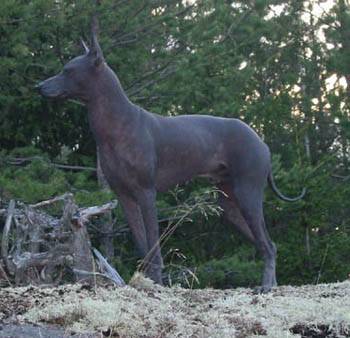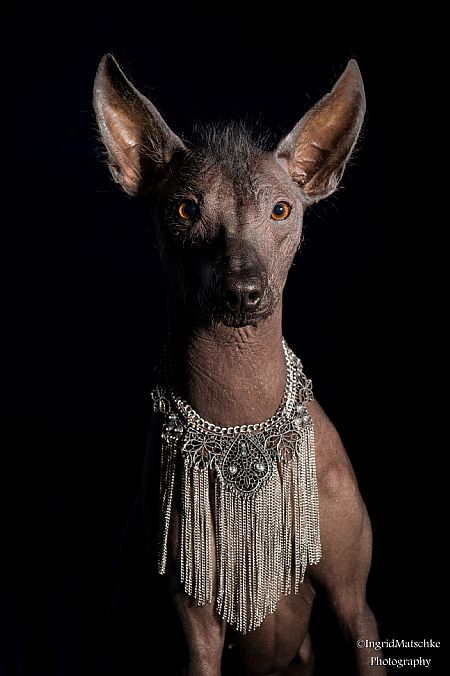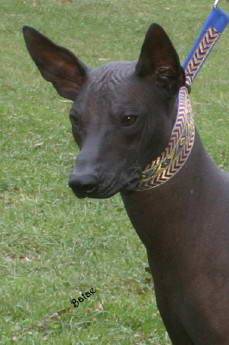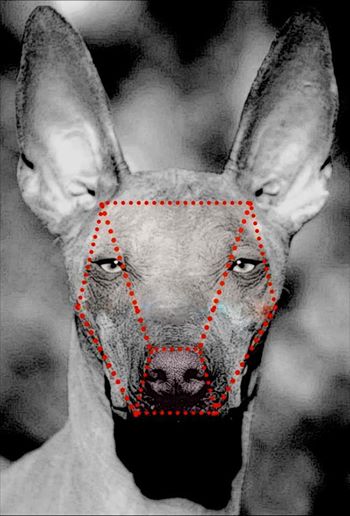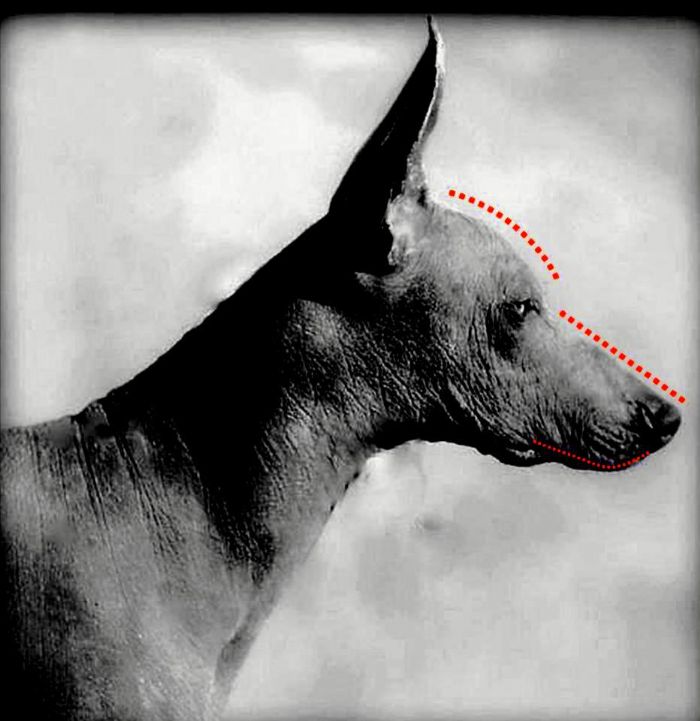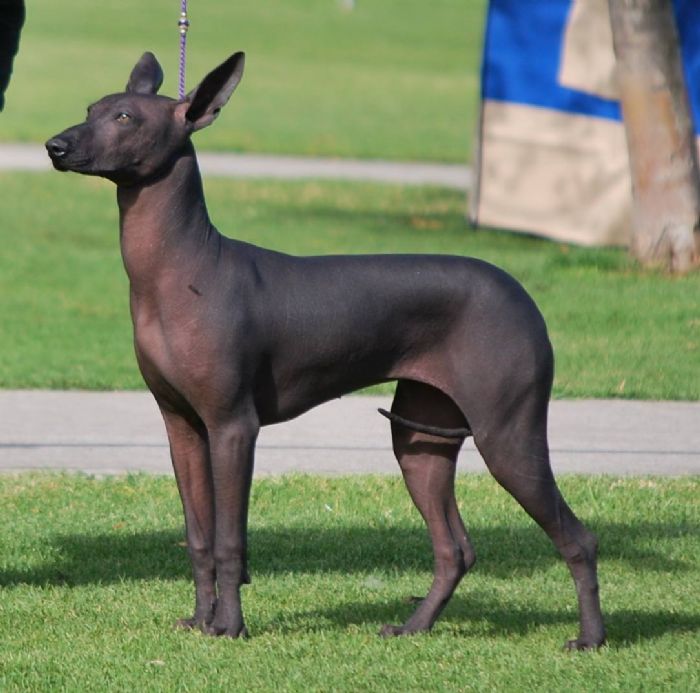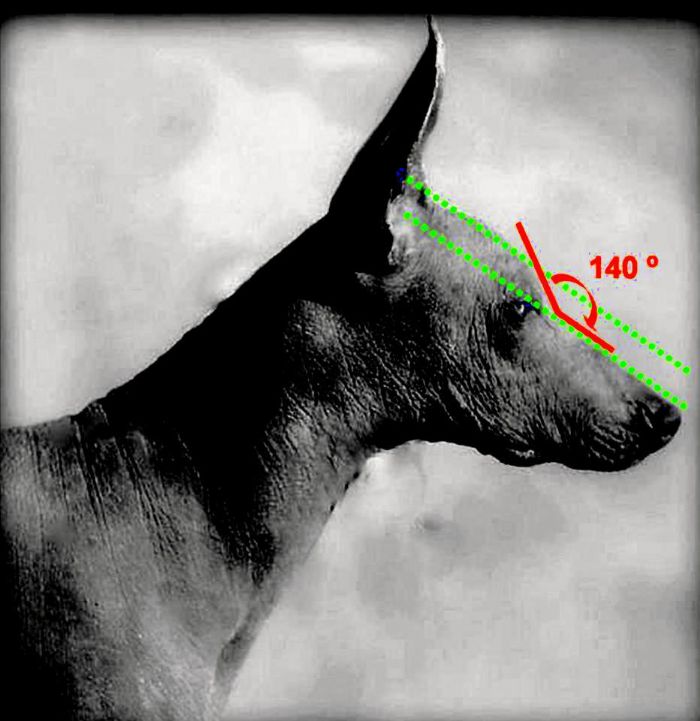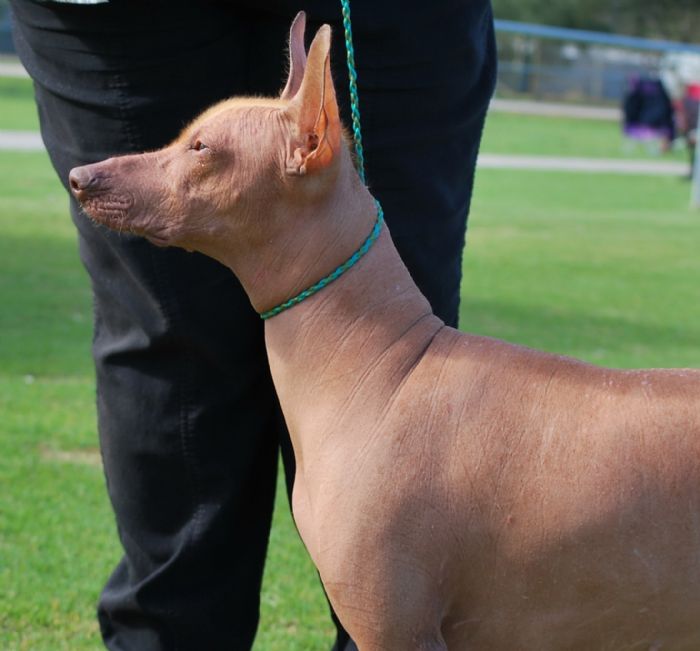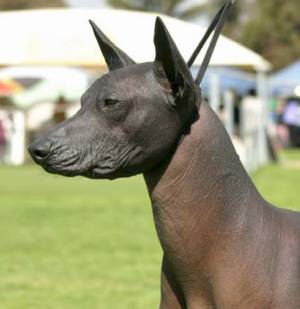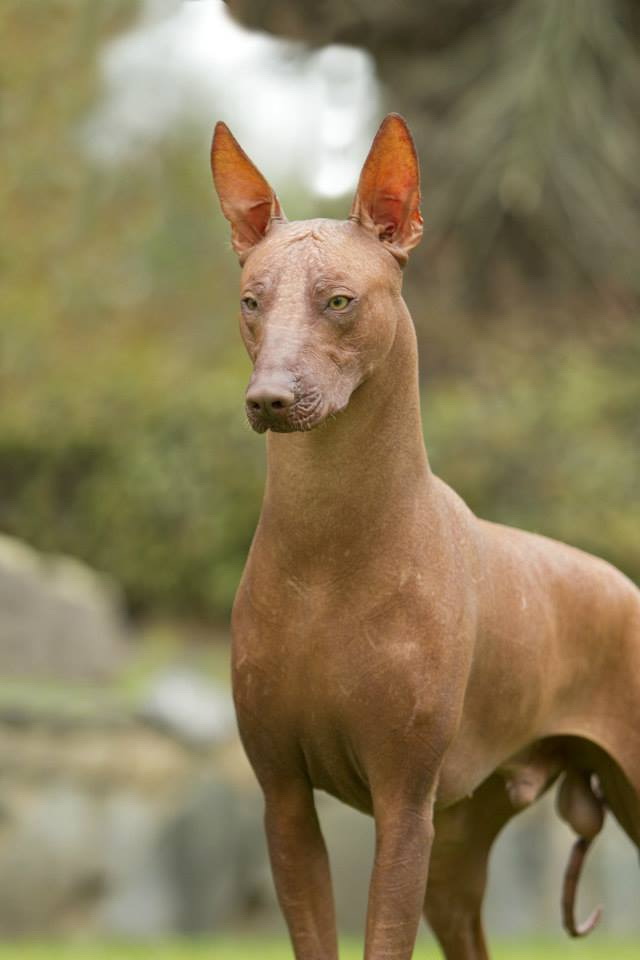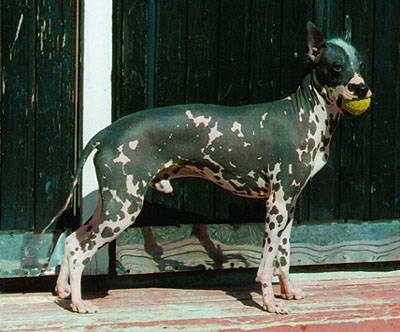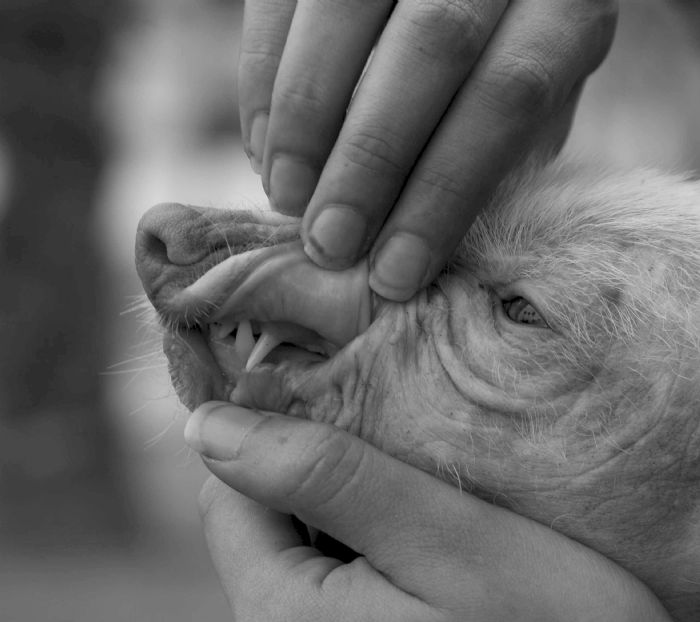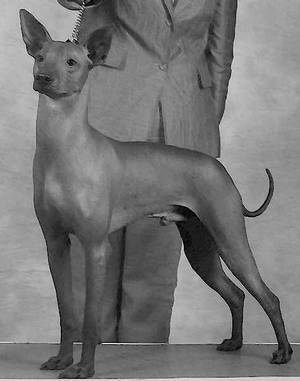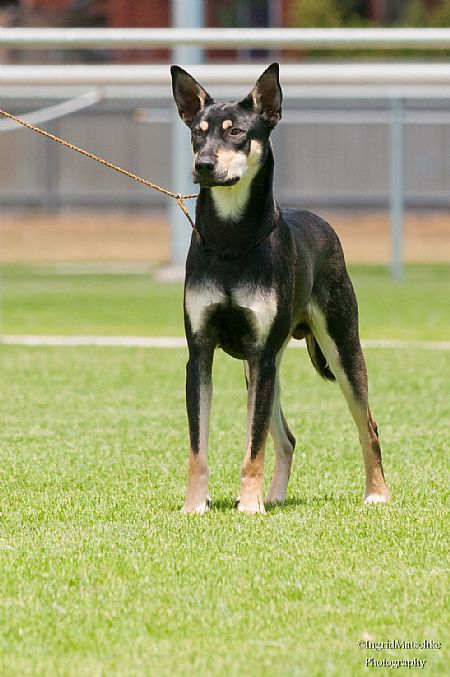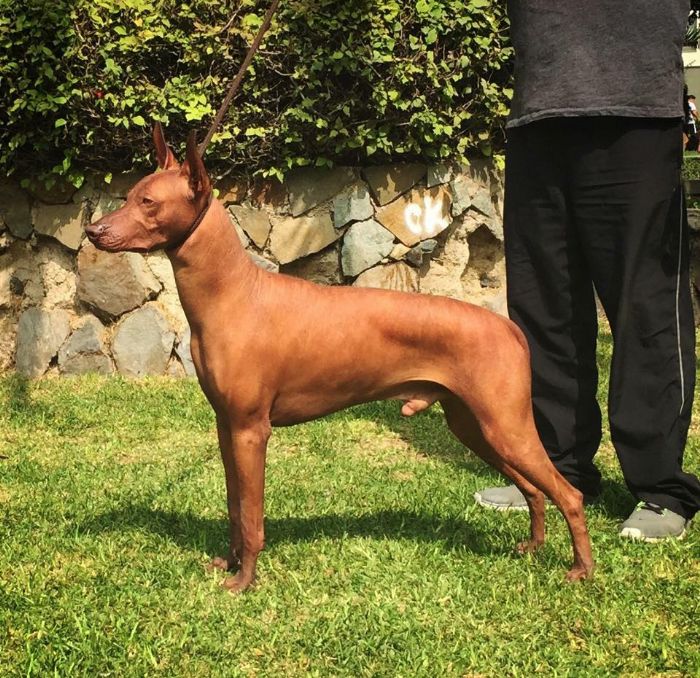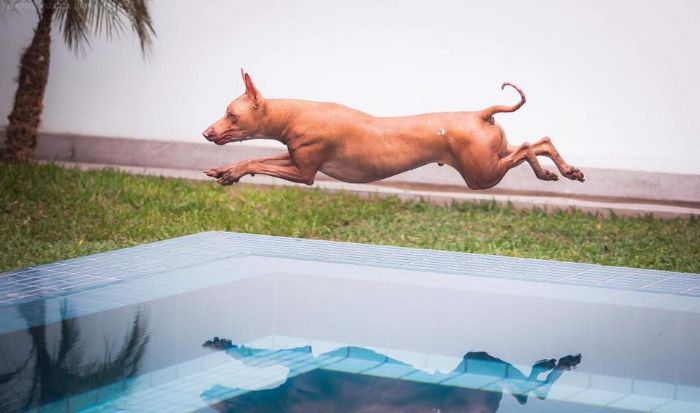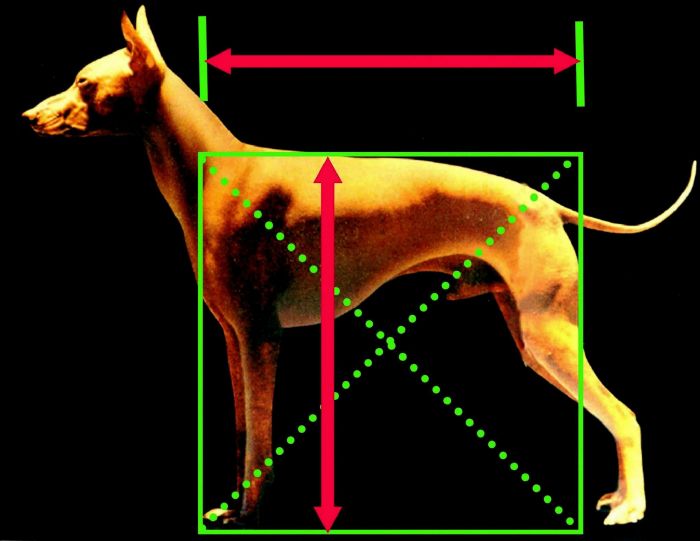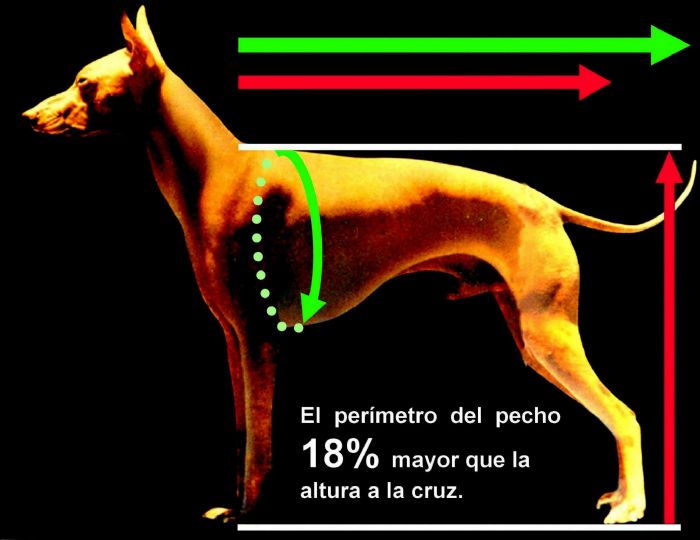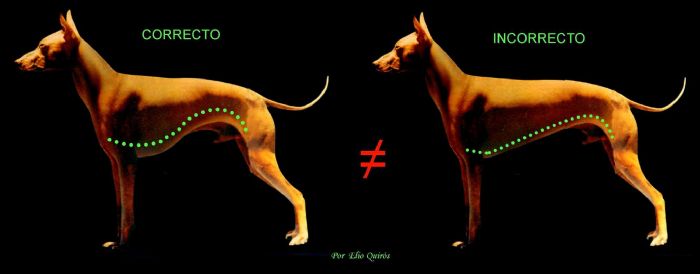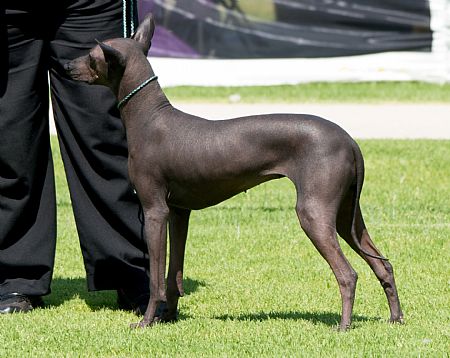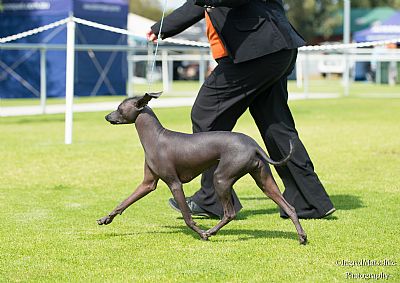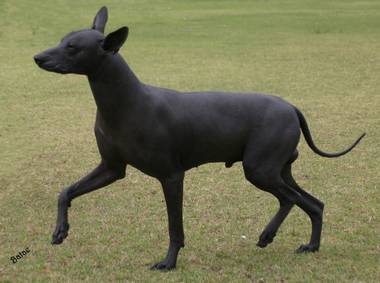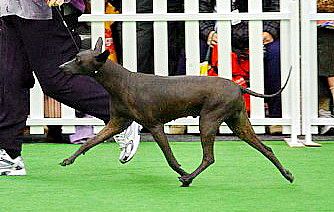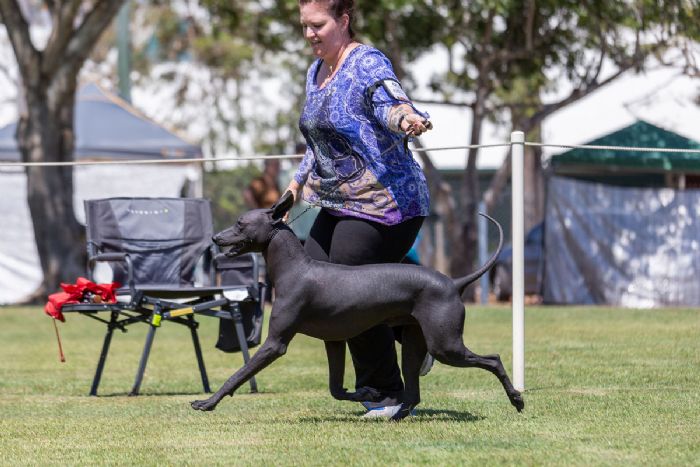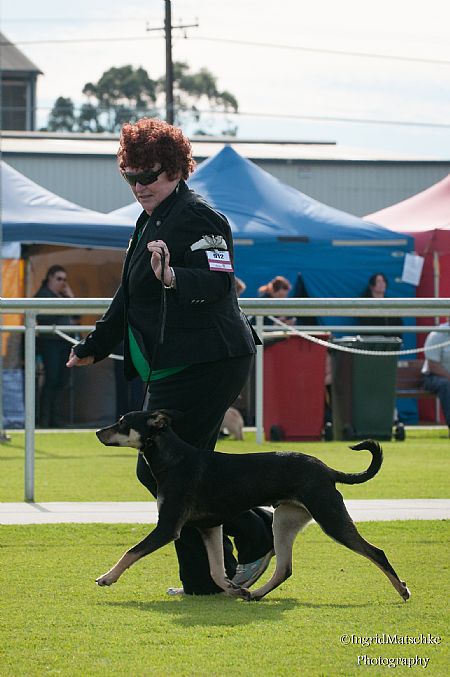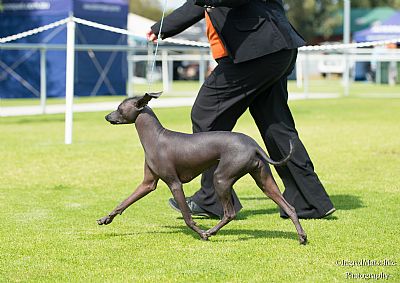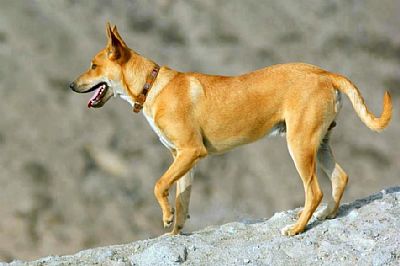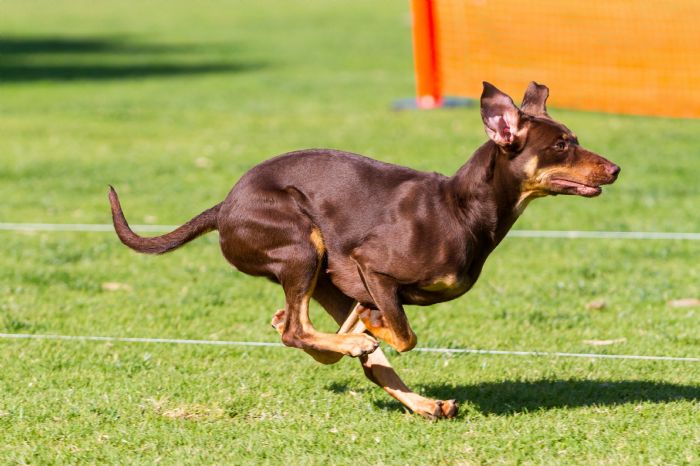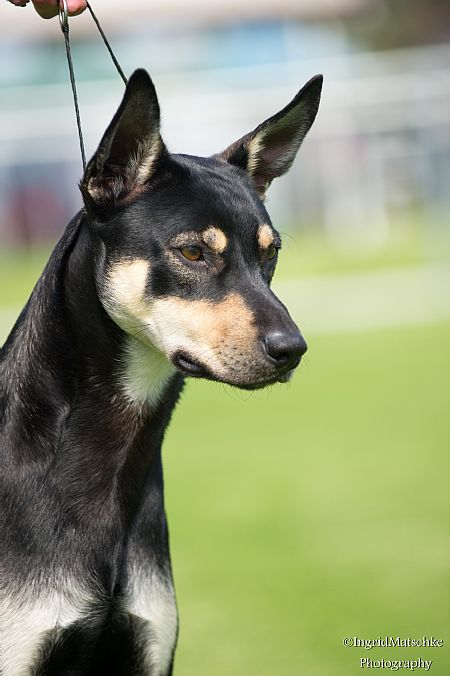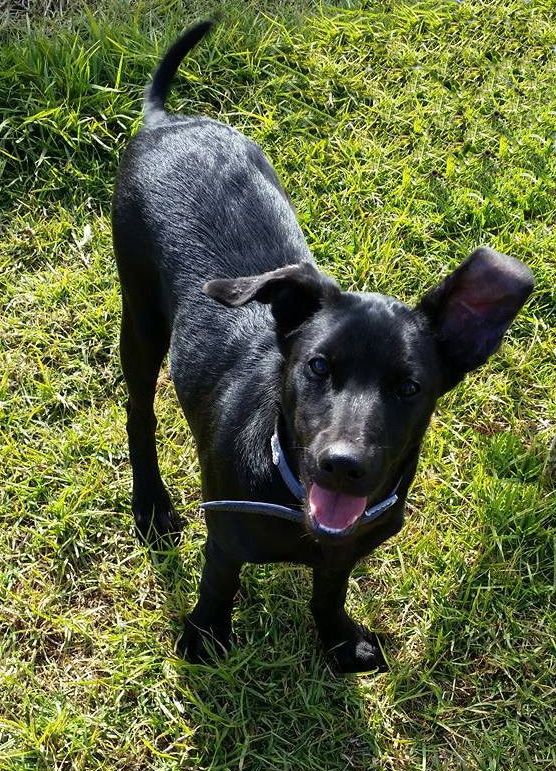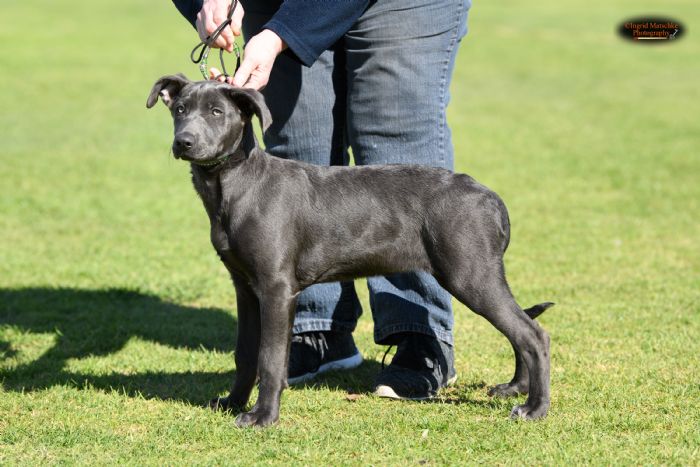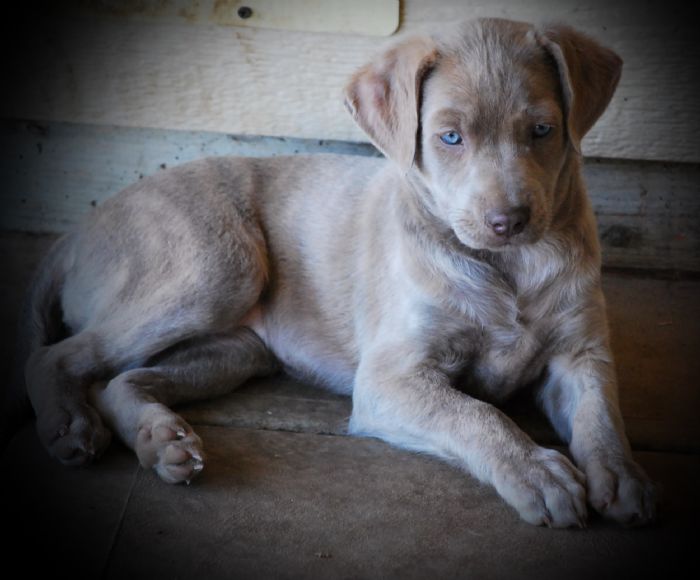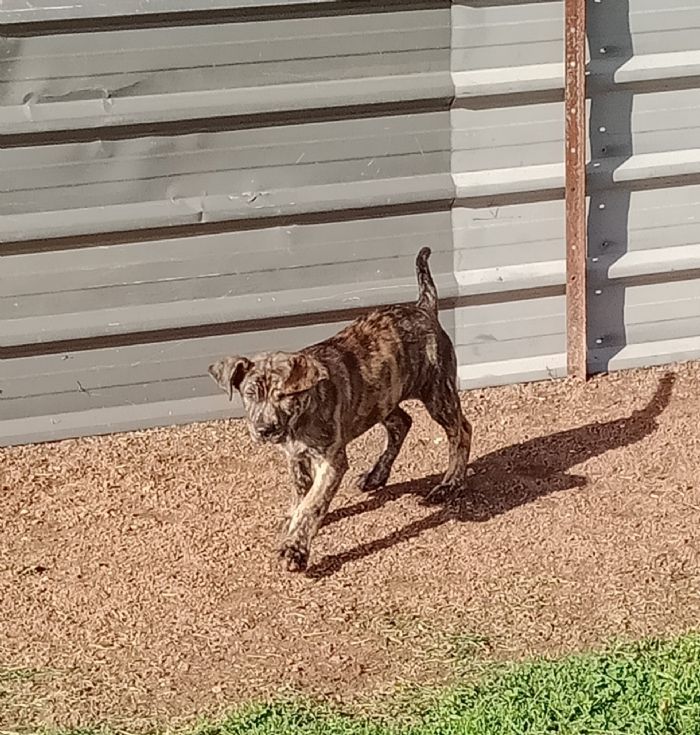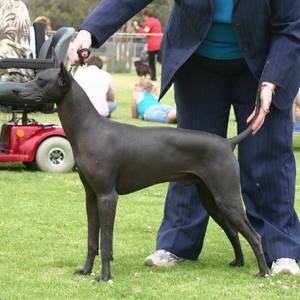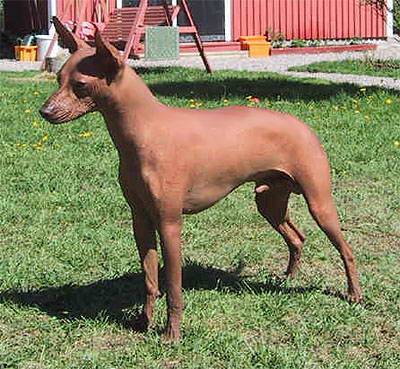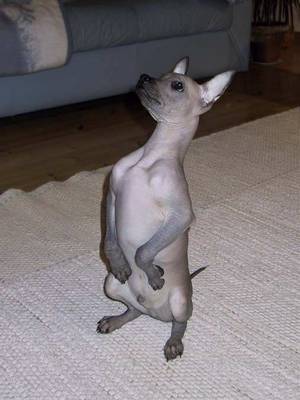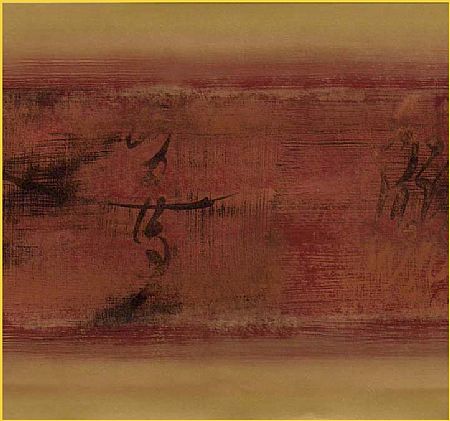 |
 |
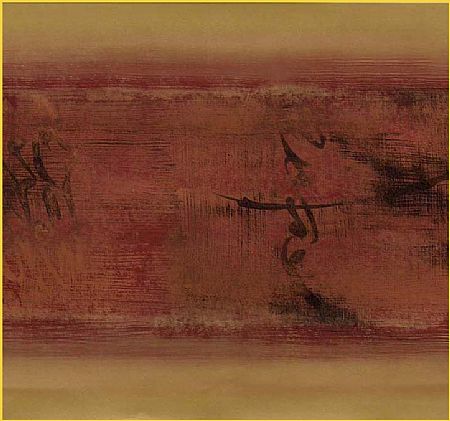 |
Judging Peruvians
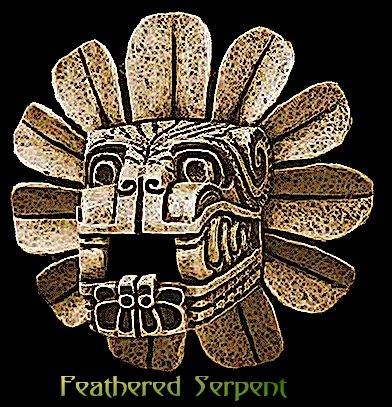 |
|
Perro Sin Pelo Del Peru
My heart is the heart of the Condor, my eyes are the eyes of the eagle My blood is the blood of the ancient races, my swiftness is the swiftness of the hummingbird We saw the rise and the fall of the mighty Inca, we witnessed the savagery of the Conquistadores Do not doubt my lineage as it is the history of my race. We survived, We are Peru!
Video of the Peruvians by the KCP
SKULL (NOSE, MUZZLE, LIPS,CHEEKS) APPROACHING A PERUVIAN TO JUDGE
If you are a Judge, please feel free to copy this for your information. Please do not alter or publish to another sites
BRIEF HISTORICAL SUMMARY: The Peruvian hairless dog, because of its particular nature, was the subject of obvious curiosity by the Peruvians from different times. Because of the allocation of different properties, they are seen on ceramics of different cultures pre-Incas like Vicus, Mochica, Chancay, Chancay with Tiahuanaco influence, Chimu and others where in many cases the hairless dog has replaced the puma, the snake or the hawk, standing with the greatest interest in the Chancay culture. As seen in these illustrations, the hairless dog makes its appearance in the archaeological periods of Pre-Inca times, from 300 BC until 1460 AD.
PREAMBLE: These dogs have been kept as a peculiarity because of their genetic nature, the procreation of dogs with and without hair in the same litter. Lost in the darkness of time the naked variety reached a major milestone when it was officially recognized as a breed native to Peru in 1985, during the ordinary Assembly of the FCI at Amsterdam city, thanks to the initiative of the Cynologist Ermanno Maniero, who did the first breed standard, it was possible that this was registered as a new breed under the name of Peruvian Hairless Dog with the number 310 of the nomenclature. The recognition of the hairless dog did not eradicate the coated relative into oblivion. Disdained from any breeding program, its current recognition in the light of developments in the study of its genome emphasizes the genetic value of the breed and contributes to its development and preservation. The recognition of the coated variety, for show and for breeding, favours the expansion of genetic variability, improving the breed’s strength and attracts new breeders. Initially to be registered, the coated variety must be the product of two hairless dogs duly registered in a stud book or breeding record. The coated variety can only be mated to a hairless specimen of the breed and subsequently also for generations to come. The mating between coated specimens is banned, just like the registrations of these in any studbooks without duly registered parents. Going by his general conformation, it is an elegant and slim dog, whose aspect expresses speed, strength and harmony without ever appearing coarse. There are two varieties, the hairless whose main feature is the absence of hair all over the body and the coated variety, that is entirely coated. Another particular feature is that the dentition in the hairless variety is nearly always incomplete associated with the congenital alopecia.
Length in females should be in the loin and not the ribcage
The Standard points out two fundamental characteristics of the breed. The absence of hair all over the body and incomplete dentition. Scientific experiments on other hairless breeds suggest a dominant semi-lethal gene to be responsible for both the hairlessness and the defective teeth in the dog.”
Skull: Mesocephalic. Orthoid, i.e. the upper axes of the skull and muzzle are parallel; a slight divergence is accepted. Seen from above, the skull is broad and the head tapers toward the nose. The superciliary arches are moderately developed. The occipital protuberance is barely marked.
Stop: Slightly marked (approximately 140°).
Nose: Good pigmentation, the colour of the nose must be in harmony with the different colours of the skin; in the different shades in the hairless variety and with the colour of the hair in the coated variety. Muzzle: Seen in profile, the nasal bridge is straight. Lips: They must be as tight as possible and close to the gums. Cheeks: Developed without exaggeration.
Ears: The ears must be pricked when the dog is attentive, whereas at rest, they are laid towards the back. The ears are of medium length; broad at the base, tapering progressively towards the tip, ending almost pointed.
BODY: Mesomorphic. Topline: Level, although certain subjects show a dorsal-lumbar convexity, which disappears at croup, level.
Withers: Barely accentuated. Back: Straight, with well-developed back muscles often forming all along the back a muscular bi-convexity, which extends to the lumbar region. Loin: Strong and well-muscled. Its length reaches approximately 1/5 of the height at the withers. Croup: The superior profile is slightly convex, slanting approximately 40° to the horizontal. Solid and well-muscled giving a good push. Chest: Seen from the front, the chest must have good amplitude, but without excess; reaching almost to the elbow. The ribs must be slightly sprung, never flat. The chest, measured behind the elbows, must exceed the height at the withers with approximately 18%. Underline and belly: The lower profile presents an elegant and well-marked line which goes from the lower part of the chest and rising to the belly which must be well tucked up, but without excess.
Forefeet: Are semi-long and look like hare-feet. The pads are strong and heat-resistant. The inter-digital membranes are well developed. The black dogs have preferably black nails and the lighter coloured dogs light nails. Hind feet: Same as forefeet. The feet of a Peruvian are webbed, as you would expect in a water dog. The breed was developed on the western side of Peru where little rain falls. The webbing along with the short step enables the dog to run up sand dunes after prey. Black dogs can have some white nails too, but black is preferred. All nails, however, must be very strong and long. The dogs have a massive nail growth and if the nails are not clipped often the toes “spread” and the shape of the paw alters and lowers. Dewclaws are not allowed in the hind legs.
SKIN: The skin must be smooth and elastic all over the body, but can form a few rounded almost concentric lines on the head and round the eyes and the cheeks in the hairless variety. It has been verified that the internal and external temperature of the hairless dog Hairless variety:Without hair, only very few hairs on the head and at the extremities of the legs and the tail are admitted, and sometimes sparse hair on the back. These hairs can be any colour or combination of colours. Without hair, only very few hairs on the head and at the extremities of the legs and the tail are admitted, and sometimes sparse hair on the back. These hairs can be any colour or combination of colours. There are also genuinely hairless dogs, which have only a few hairs on the head, toes and body. It is allowed that the toes have hair but it should not be abundant or rise high in the limbs. Hair on the tail can be abundant but it is not hoped for. With other dogs the hair can be long. At least one third of the tail’s root should be hairless. You must remember that the more hairless the dog is, the better COLOUR: The colour of the skin in the hairless variety can vary from black, slate black, elephant black, bluish black, the whole scale of greys (diluted black), Bronze, Copper, Dark Brown going to light blonds all nuances of genetic blue, dark brown going to light blond. All colours can be either uniform or show depigmented areas in any parts of the body, preferably on the chest, legs or tail, nevertheless the extensions should not be more than 20% of the body. In equal condition solid colours are preferred The breed reveals itself as a variety of colours, with a solid coloured body, being more common than a multi coloured body, but neither being the exclusive rule. No preference should be shown in the judging ring in this regard.
Coated variety: Smooth, short and tight coat. The hair can be any colour or combination of colours except Merle
LARGE MEDIUM SMALL
Small from 25 to 40 cm Medium from 41 to 50 cm Large from 51 to 65 cm Small from 4 to 8 kg
Any departure from the foregoing points should be considered a fault and the seriousness with which the fault should be regarded should be in exact proportion to its degree and its effect upon the health and welfare of the dog. · Semi-erect ears, one or both. · Pincer bite. · Absence of PM1 in the coated variety. · White or pink spots covering more than 1/3 of the body in the hairless variety. · Presence of dewclaws.
DISQUALIFYING FAULTS: · Aggressive or overly shy dogs. · Any dog clearly showing physical or behavioural abnormalities shall be disqualified. · Over or undershot bite. · Deviated jaw (i.e. wry mouth). · More than one tooth missing in the coated variety. · Hanging or cropped ears. · Tongue normally hanging outside of the mouth (paralyzed). · Eyes of different colour (heterochromatic) · Tail-less, short tail or docked tail. . Presence of hair in the hairless variety on parts of the body not indicated in the standard. . More than 20% of the body is depigmented in the hairless variety. . Merle coat colour in the coated variety. · Total or partial de-pigmented nose. · Height more than 65 cms and less than 25 cms. · Albinism. N.B.: Male animals should have two apparently normal testicles fully descended into the scrotum
What judges need to understand when judging Primitive breeds such as the Peruvian Hairless. 1.This dog can be very shy at first; Peruvians need time to trust new people and things. 2. This is NOT a Labrador or a Rottweiler, do not rush at it like you are late for lunch. 3. DO NOT eyeball this breed, they were bred as Watch dogs and hunting dogs, they will be wary of you as most Sighthound types are. Talk to the handler and set up some rapport before you try to touch the dog. 4. Do you really need to touch the dog much at all? Both varieties have little to hide, one is totally hairless and one has a smooth short coat. Ask the handler to mouth the dog, less stress for everyone and as in the Hairless you will not be looking at much most of the time. 5. Do understand the gait of this breed. It moves with a shorter step in front and it single tracks. A shorter step will often make the elbows move out, the shorter the snap back the more different the action looks especially considering this action is meant to take the dog uphill and not along level ground. It is NOT a Hackney gait. 6. This breed has an arch over its loin, this is NOT a bad topline. 7. Finally, do not expect the dog to run straight up to you at the end of the triangle, it is not your pet dog, it WILL stop short as you are an unknown entity and therefore considered dangerous. This is very clearly seen in young dogs in the ring and time alone will make it better unless you terrify them now by over handling.
•ACKNOWLEDGEMENTS. •Votkin Paivi –Finland •Chan Melanie-USA . Sally Johnson- Australia
EL PERRO SIN PELO DEL PERU: UNA RELIQUIA VIVIENTE EN AMERICA. Por Abel León VilchezPublicado en la revista OFICIAL – REVISTA CANINA, Año VI, Nro.24, Noviembre del 2003, Argentina.
The first question anyone would inquire about the origin of Peru Hairless Dog, it is about when did you arrive to our continent and how it was settled in different regions to meet as we see in modern times. Although perhaps never have the complete certainty of fact, at least we try to offer the most accepted, allowing us to offer a first glimpse of this breed. There is no doubt that the first animal was the man managed to tame the dog. The process must have taken thousands of years to transform the wolf allowed it ideal for hunting, first, mate and then the guardian and faithful companion during the settlement of Eurasia. It should be remembered that in September 1993 the Commission on Zoological Nomenclature acknowledged that wolves and dogs belonged to the same species, and current studies indicate that mitochondrial DNA between the wolf and the dog no less than 0.2% of sequence differences bases, confirms that descends where our faithful friend. By known geological investigations that took place in North America four major glacial advances in the Pleistocene , ie from about 2 million years ago to 10,000 years ago. The glacial period that interests us is the last major glaciation produced roughly between 70000-10000 years before the present . This period is closely linked to the level of the beaches, where the accumulation of larger volumes of ice on the continents the sea was reduced by lowering the level of the beaches. has been found that during various stages of the Pleistocene the sea dropped more than 40 meters, which is the depth of the Bering Strait , emerging as a result, the land connection between Asia and America that made possible that man could reach this new continent . If the migration entails the removal of their immediate environment, within which the dog had begun to take a utilitarian , meaning important for survival , then we understand that the appearance of the dog in America begins with the arrival of man in these parts Since its establishment in the north and moving to South America, the man continued living with the dog accompanying him at different stages of cultural development. Thus we can find different artistic expressions that represent the dog, in cultures as far apart as different . The possibility that the character hairless , like any congenital abnormality, can occur at any time or place in any species or race, obvious discussion on single or multiple origin, if not prehistoric dog hair has the same trunk in old continent and in the new world, in Peru or elsewhere in America. Recall that species of hairless dogs of the ancient world are more than the new . Mention the African greyhound , Turkish dog, Guinea , the Jivaro , the naked dog Ceylon and Manchuria, is known as the Chinese Crested Dog. In our continent Hairless Dog Peru is one of the two American naked races. Both were developed in different geographies , concentrated in a space that allowed each define their characteristics . In Peru , the settlement of the hairless dog came almost exclusively on the north coast , characterized by extensive sandy beaches and valleys that are within a few meters above sea level, taking in the Andes and rainforest near the equator as natural barriers that enabled its concentration in a region of our country. Geographic isolation in that sense played an important role in the formation of a type of dog that would lead naked after its definition as a race. When the Spanish arrived in Tahuantinsuyu found a different , socially and politically orderly civilization under the vision and concept of the Andean man , without the influence of the advanced societies that were developing on the old continent . They found a flora and fauna rich in variety , "rare" species never before by the European eye rapidly captivated their interest and curiosity. Many of these species were taken to Spain as souvenirs of the New World and among them some strange dogs without hair . An original and unpublished manuscript, kept in Madrid, contains notes of Francisco de Hernandez where he reports that " ... in New Galicia there is a breed of dogs without hair , of smooth leather painted retrievers form , although they are taller and have barking mode different from the others , of which prince Charles, our lord, has one " In more recent times, the Peruvian writer Guillermo Gallardo narrated " ... when Philip the Beautiful of Spain arrived , they presented some curiosities arrivals newly discovered western lands. On Wednesday, 22 June of 1502 the son of the Catholic Monarchs in their accommodation, but they showed him two very new things : one was a totally black dog with no hair at all that stretched out his snout like a black ; the other a green parrot no bigger than a small monkey , talking of what is credible " . These versions collected and narrated by the first chroniclers who arrived with the expeditionary hosts of Francisco Pizarro are the first news we have about the existence of the Hairless Dog Peru. However, its origin is a story not yet told that takes us back to about three thousand years ago, during which Peru Hairless Dog and the dog generally motivated diverse artistic and cultural expressions, mainly during the Pre -Incanato. Unlike this stage, during the Inca hegemony, dog picture generally declined, associating itself to the lunar cult, you will not worship nor are they ate and only in very specific cases were sacrificed. During the formative period of the Andean societies, the regional development predominated along the Peruvian coast and highlands today. Once produced the domain of agriculture started, theocratic feudal extending in time until after the beginning of the Christian era. Perhaps the oldest shows that the union of man and dog initiated thousands of years ago, also acquired importance for the ancient Andean people is the discovery in the cove of Puemape in San Pedro de Lloc, of dog burials sharing the cemetery the inhabitants of the time, belonging to the Salinar Culture, whose remains show an antiquity of approximately 300 years BC During that time the Chavin culture flourished ( 1000-400 BC). Considered by most archaeologists as the oldest Andean society and its center was located in Huantar , Ancash . Archeologist Marco Curatola is some relationship between Chavín iconographic representation of the Tello Obelisk and the myth of Achkay . This tells us that during a time of widespread hunger , two brothers , boy and girl , come to Chavin , where Achkay and daughter pretend Oronkay welcome them warmly. At night they killed the boy and sister alerted by a frog flees with the remains of his brother, came to the territory of " kullkush " who transformed the child into " kashmi » ( white dog) and became her companion in the flight to the highlands , finally reaching heaven. There it becomes " Ongoy " ( the Pleiades ) , according to one version , or " Achachi Ururi » ( Morning Star ) , according to another . The girl, however, became " Apachi Ururi » ( Night Star ) . Since then , these stars are the guide of travelers, shepherds and farmers. servant of the gods of the mountains. Near Nazca belief that dogs go to the spirits of the dead on the hill Coropuna persists. More than 1000 years before the beginning of the Inca Empire, the Moche culture (100 BC - 600 AD) reached its maximum development in the coastal plain of Peru. Although unaware of the writing, the Mochicas transmitted the representation of their activities and their environment their art, expression means that amazingly. Ceramic is the most common means of expression and the best known of Moche art. Over 90% of the survived rests are ceramics and almost all the scenes represented in any other technique also appear under the form of fired clay receptacle. The Moche were famous for portraying in their huacos the different aspects of their society, the personality of their master, their customs and rites, human expressions of their different states of mind, birds and other animals, we point out the hairless dog, with whom he lived and kept as a faithful companion, part of the Moche religion. The dog generally within the Moche iconography appears in almost all the representations of Mochica activity, almost always next to the priest or warrior or the main character. This hitherto only observed in the painted ceramic scenes, was confirmed in 1987, when the archaeologist Walter Alva discovered in the center of a clay platform known as "Huaca Rajada", the tomb of a ruler, warrior and Moche priest who called with the name of the Lord of Sipan. The first finding was a guardian with amputees feet symbolize the obligation to remain in place forever. Then in a funeral box was the Lord of Sipan who was surrounded by eight servant's skeletons, two concubines and one dog. Many of the unearthed ceramics that represented the hairless dog were found in the centers of development of the Sican Culture (1000-1200 AD) , named after the Sican Archaeological Project . Watching them we can emphasize their knowledge of the canine species showing in different attitudes and stages of development. So we can see them at the time of mating, in alert attitude or feeding , as well as wind instruments like cornets and whistles , to put it more representative. Some ceramics show him carrying collars which can be interpreted as a form of identification , allowing perhaps -without intending to do a sort of selection , which combined to the genetic strength enabled it to bridge centuries of oblivion to these days. The decline of the Moche Culture gave way to a new , the Chimu Culture (1100-1450 AD) , which comprised a period of transition between the Wari and Inca. The largest amount of ceramics belongs to this culture as the Moche portrayed the different stages of life , nursing their young, as evidenced today a few , resting placidly , and many other moments . Accepted in the homes , their gratitude by their work, alerting its dwellers of the incursion of neighbors seeking to conquer land and also exterminating rodents and bugs that threatened the harvest. In his work on aspects ethnobiological Pedro racial Chimoy identified three types of dogs belonging to the time of development of the regional states, in which a "chow" name that you know in rural areas was found. Work on the archaeological complex of Túcume located in La Leche allowed to report: "... the Peruvian dog pug nose and a breed of dog known as viringo or without fur, which show signs of cuts in the atlas vertebrae and humeri, simultaneously with nipping ... ". The latter would confirm not only the ritual use of the hairless dog but reinforce the idea of ??its use as food, custom Garcilaso de la Vega, commenting on the canofagia of Huanca, reports that the heads of dogs who ate, made speakers, whose sound had magical properties, and it is possible that the Chimu did such a thing, which to date deprives us find more skeletons in cemeteries. Other regional states in pre -Inca shaped in his art the hairless dog . The Chancay Culture (1000-1450 AD) with its beautiful vessels in their black on white style depicted the life cycle of the hairless dog . Perhaps the two most representative are showing a bispherical container representing intercourse , noting that the handles are the extremities of the male ; and the other shows the hairless dog in a watchful attitude. Both ceramics belongs to the collection of Jaime del Castillo. Tahuantinsuyu established, the Incas carried out its political and social organization, where the expansion of the State was based on reciprocity system, plus the redistribution and, to a lesser extent, the existing exchange especially on the coast. In several cases, territorial annexations occurred peacefully, for it was better to accept the offerings of reciprocity of the Inca than a doubtful war with fearsome consequences for the losing ethnic group. This favored the rapid expansion Inca rulers forced to seek new supply sources for rewarding local lords. The vast expanse of the state had, however, very fragile foundations that gave rise to its collapse when Pizarro's army appeared. On the north they arrived to Loja and Southeast until Tucumán and La Plata, in the current Ecuador and Argentina. It was essential to repopulate the new territories with immigrants or "mitmaq" related ethnic groups from the Incas, to fulfill tasks for the state . Thus , for example, they were transferred to Cuzco Chimu artisans for making fine metalwork for the Inca and the nobility. They arrived with their belongings and domestic animals , hence the wide spread of the hairless dog in South America, known in Bolivia as " ccala " Bolivia , and northern Argentina as dog " stack ." In ceramics , in spite of the affinity with some Moche and Chimu vessels, is manifested in its early stage a major advance from the technical point of view , which does not happen on an artistic level , because at this stage dominated by a high degree of stereotyping and a decrease in quality and realism of the representations . The Inca Culture contributed with new forms , but the manufacturing technique nor the decorative models, constituting what has been denominating as the Chimu -Inca style. When Melchor Verdugo, and member of the Peruvian hosts arrived to the calm beaches of the afterwards baptized province of Trujillo in 1534, a shapeless mass of hairless dog surrounded him, barking until disengaged. With him had come "Bobo", his greyhound. More equine than canine dimensions, "Bobo" with just one bark scared the «viringos" and in one bite took at least a couple of heads. A few years later the dammed greyhound would enter history for eating the son of the chief of Cuismanco. There is no doubt that this race could get to this day, thanks, in part, due to the custom spread among the coastal population in the north of their healing "qualities". Why the intersection peeled was wanted for these useful dogs in curing rheumatism, asthma and bronchial processes, which acted as a hot water bottle, plus heal other evils as detailed Hermilio Valdizán in his treatise "Popular Medicine" edited in the late nineteenth century. Not only its curative qualities acceptance, but also for its capacity to exterminate rodents, which caused great damage during harvest. Subconsciously there was a selection that kept the race known as the ancient Peruvians. One element that supports this assertion is that the best specimens, phenotypically speaking, from agricultural areas in the north, where traditional folk culture still persists among peasants, or the surrounding areas to the cities. I mean dogs "pillars", those without known genealogy contributed to the formation of blood lines currently beginning to develop, forming a recognized and standardized offspring. These great similarities with those shown on ceramics of different pre-Hispanic cultures, hence the importance of locating the best units in the field. His suspicion and distrust strangers made it an extraordinary guardian, and raised in the countryside, it develops its hunting instinct also excel as an excellent pet dog, qualities inherent since ancient times. From there, talking of a living relic is not that far from reality. Currently the race is being worked on the effort of breeders, not only concentrated in Lima, but in some provinces. The rigor in the selection should be the main tool for the Hairless Dog Peru reaches the desired level, allowing the spread and popularity it had in earlier times, a task that must be found in the Kennel Club Peruano its main driver. According to its general conformation is constituted as an elegant and slim dog , whose aspect expresses speed, strength and harmony without ever appearing coarse . This breed has as main feature the absence of body hair . Another particular feature is that the dentition is nearly always incomplete . Of noble and affectionate nature with those nearest to him reserved with strangers ; awake, alert and guardian. |
![]()
![]()
![]()
![]()
![]()
|
![]()
|
|
|
|
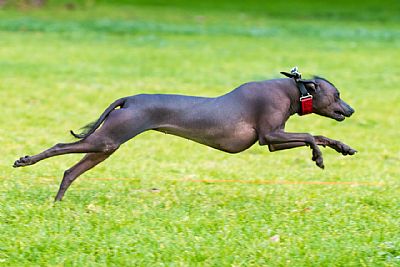
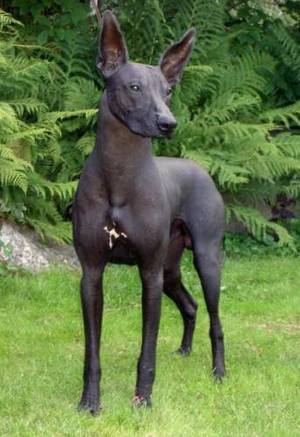
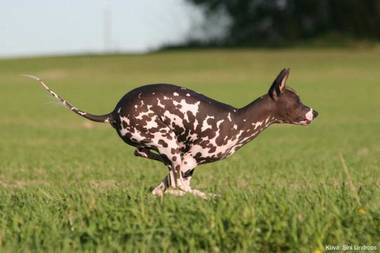 Heidi Gustafsson
Heidi Gustafsson 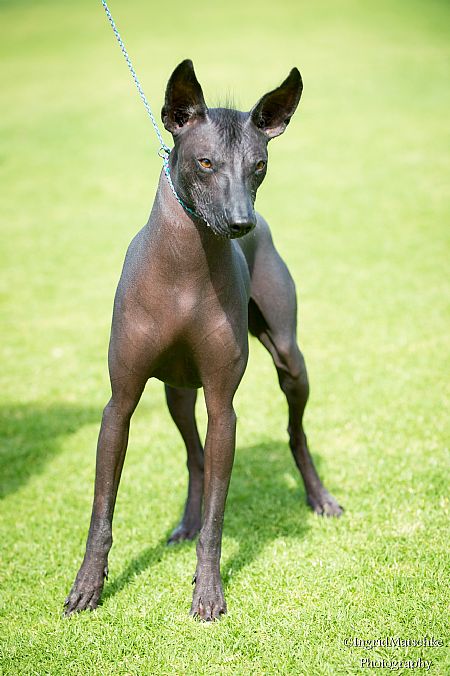
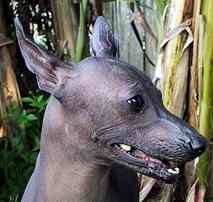 Melanie Chan
Melanie Chan 